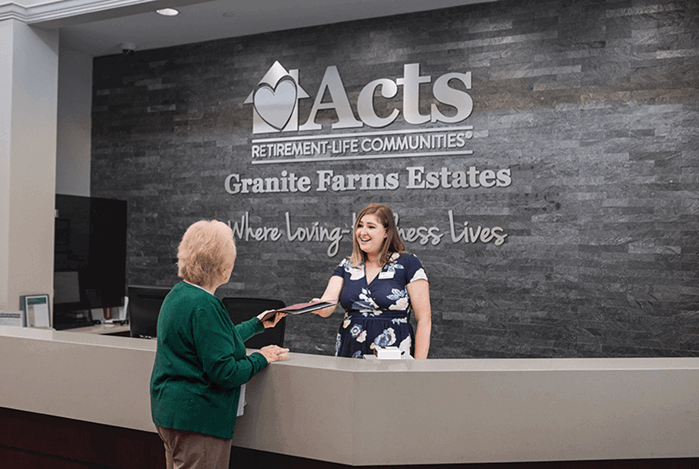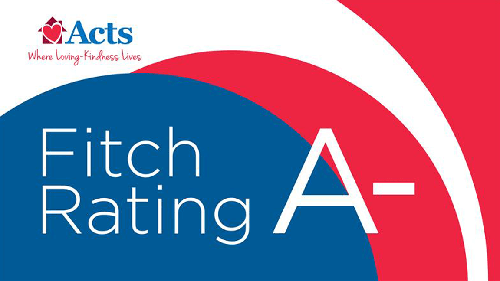What is an Entrance Fee at a Retirement Community?


When it comes to choosing the ideal living situation for later in life, retirement communities are often great choices. There are dozens of benefits a retirement community offers, including amazing amenities and worry-free maintenance, often at a sensible cost.
If you are considering a move to a retirement community, many communities have entrance fees that you’ll need to pay upon move-in. What is an entrance fee at a retirement community? Let’s take a closer look.
Entrance Fees for Retirement Communities
A big advantage of retirement community living is that most of your expenses are taken care of with a single monthly maintenance fee. This fee pays for the primary services the community provides its residents, including:
- Access to various amenities like swimming pools, fitness centers, and activities
- Landscaping, snow removal, and all those chores
- Home maintenance — no more paying out of pocket if your family house needs a new water heater
- Continuing education opportunities, classes, and other seminars
- Many communities include exception dining options
- And there are many more benefits
An entrance fee at a retirement community is meant to not only ensure the retirement community can provide top-notch amenities and — in some instances we’ll get into later, health services — but they also keep monthly payments for residents consistent, so as not to unexpectedly deplete retirement savings. Also, entrance fees and monthly fees are often tax deductible as a prepaid medical expense.
1. Lower Monthly Payments
Making your retirement savings last is obviously important for older adults. No matter how much you’ve saved, you want to make sure your retirement income is going to good use so that you’ll have the resources to continue enjoying retirement without having to worry about affording your living expenses. This is one way that entrance fees can help.
An entrance fee for retirement communities is one of the most comprehensive long-term healthcare plans available. You’re paying more at the onset so that your monthly rate will be lower and not increase when long-term health services are required. This makes entrance fees beneficial for older adults who want to manage their long-term expenses carefully. Often times they can put the money they make on selling their home into the entrance fee and then still have a sizable nest egg left over to enjoy as they see fit.
2. Better Amenities and Services
The best and most well-managed retirement communities are often referred to as “resort-like,” and there’s a clear reason for that. These communities boast beautiful, well-landscaped campuses that stretch for acres, offer comfortable and spacious accommodations, and provide world-class amenities and services to their residents.
None of this comes cheap, and the retirement community needs an operating budget to continue providing this world-class level of service. While residents’ monthly fees provide support for this, entrance fees for retirement communities can help the community invest in larger-scale projects like breaking ground on new facilities or renovating older ones.
But most of all, entrance fees help pre-pay health costs in today’s dollars. Consider them an investment in your future. Given the rate of inflation, this benefit may offer the most peace of mind. Read on to learn more.

3. Better Medical Care
While not all retirement communities ask for entrance fees, it’s customary for those that offer long-term continuum of care contracts to do so. Continuing care retirement communities (CCRCs) provide customized health services to their residents according to need, which means residents don’t need to relocate to an assisted living or skilled nursing community if their needs change over time.
Moving into a CCRC is beneficial because it ensures your medical costs won’t escalate dramtically if long-term care is needed – it’s part of such a retirement community’s appeal. Paying an entrance fee is one reason why a CCRC can afford to provide those medical services in such an affordable way. Without an entrance fee, it would be difficult for a CCRC to provide this crucial benefit to its residents.
To break it down: You pay an entrance fee when you move in, which in part helps pre-pay future medical costs, and then a monthly fee, which covers your home, many campus amenities, and other common expenditures like utilities, meals and real estate taxes. Then, should you ever need a higher level of care such as assisted living, you will receive it on the same campus, with no increase to your monthly fee based on your increased health need.
At communities that don’t offer entrance fees, often referred to as “fee-for-service” communities, your monthly costs may increase substantially to accommodate your additional health needs. This does not happen at communities which offer entrance fees to pre-pay for future medical costs. Your costs are baked in from the beginning, securing your future healthcare at predictable rates. It’s an investment in your future.
4. Solid Tax Options
One question that often comes up is whether an entrance fee at a continuing care retirement community is tax-deductible. Since health services are involved, you can often deduct a portion of your entrance fee as prepaid medical expenses, in addition to claiming a percentage of your monthly fees that go to your medical costs.
This is universal – it doesn’t matter what your level of health is. You’re still paying for medical care, even if you don’t yet need advanced levels of care because you’re currently healthy. The federal tax deduction for medical expenses is typically capped at 10 percent of your adjusted gross income, but the year you move into a CCRC with an entry fee, you can benefit from a sizable tax reduction for that year.
Financing Your Entrance Fee
Moving to a retirement community with an entrance fee, like a CCRC, can feel daunting when it comes to how you’re going to pay for it. It’s a major investment, but many retirees will be able to afford their entrance fee without it being too much of a strain on their retirement finances.
Typically, retirees who move to a CCRC put their existing home up for sale to access the equity in their property. This equity has likely been building over years if not decades, and even if there might be a few payments left on the mortgage, the sale of that property is likely to yield an excellent return. The proceeds of that sale can be used to pay a portion of your entrance fee and still leave plenty left over to bolster your retirement income, leaving you a comfortable nest egg to enjoy your senior years in style.
If you or a loved one are interested in exploring CCRCs in your area, Acts Retirement-Life Communities is one of the country’s top providers. View our 27 wonderful campuses across 9 states to learn more.



